没有电池包的新能源汽车
这也意味着车辆底盘内需要直接铺上电芯,而没有了模组和PACK结构的保护,就需要对电芯做好绝缘支撑。
除了电芯方面所必需的一些设计,电池热管理等方面也需要进行更新设计。
电芯和电芯直接排列在一起,意味着一旦一个电芯发生热失控,就很容易传导到临近的电芯,从而导致整个电池的热失控。
在设计的时候就需要考虑水冷板究竟放在什么位置以及泄压阀如何设计,这些问题直接关系到车辆和乘客的安全,所以这方面的设计丝毫马虎不得。而整个电池包的BMS设计也非常重要。
整体来看,如果想要采用CTC技术,那么对车身的结构设计和电池包的设计都会生产一定的影响,这些主要难点也就成为CTC技术最关键的地方。
02。
分为两种途径 均已到达量产前夜
目前来看,CTC技术还比较新,也只有少数几家车企展示了自己的方案和产品,大多数车企还没有产品展出。
从已经发布的产品来看,CTC技术主要有两种体现形式。一种是目前多个车企采用的方式——将电芯直接集成到车辆底盘中。
这一方式有点接近智能手机领域的发展思路:从最开始电池可拆卸转变成为电池一体化设计。
具体来看,车企直接取消了电池包的上板结构,或者说将车辆内底板作为电池组的上板结构,然后将电芯布置在托盘上,将托盘和车身内底板组合在一起,形成新的车身结构。

车辆的座椅可以直接安装在电池包上方,进一步扩大车身的空间结构,而在电池布局上也可以增加更多的电芯,续航也可以因此实现提升。
那么,这种方式是如何应对技术上的难题呢?这方面不同车企的策略有所不同,在车身结构方面,特斯拉采用了前后一体式压铸技术更改了车身结构,前后两个大件可以直接拼接成车辆底盘,可以提前把底盘的空间预留好,为电芯集成做好准备。
而比亚迪也采用了全新的车型平台e3.0,虽然还不清楚比亚迪是怎么做的,但在新的车型平台也一定会对车身结构进行调整。
散热方面,目前大多还采用的水冷板散热,特斯拉的方案中,水冷板是放在电芯的正上方,这样方便阻隔电芯的热量不会上传到驾驶舱,而电池包的泄压阀则在电芯下方,进一步保证了电池包的安全性。而电芯之间则采用了低密度的胶,降低了彼此之间热传导的风险。
零跑的方案中则在电芯下方采用了水冷板、隔热层,而在电芯的上面同样也采用了隔热层,防止热量上升到座舱内部。
另一种是滑板底盘,同时涵盖了CTC技术、线控技术等,将车辆底盘的行驶系统、转向系统与车辆的乘员舱完全解耦,底盘和车体直接独立。
车东西此前曾经观看过悠跑科技所设计的滑板底盘,通过遥控装置,车辆底盘可以自如完成前进后退,甚至是自动泊车的一系列指令。
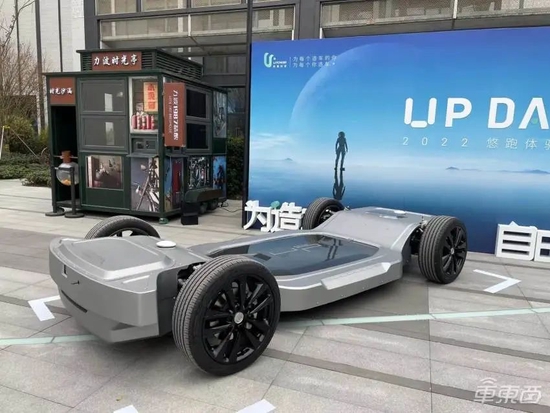
这一设计方式类似于燃油车时代的非承载式结构,底盘和车身分离设计。但不同的是,这种滑板底盘的能力更加强大,可以说是车辆的灵魂所在。
只要底盘和车身达成一致的通讯协议,就可以根据滑板底盘制造各种车型。
得益于此前的非承载式车身结构设计经验,采用滑板地板之后并不需要花费过多精力进行车身的重新设计,几乎可以照搬此前的非承载式车身设计方案。
电池包结构和散热对于滑板底盘来说尤为关键,Lucid CEO兼CTO Peter Rawlinson曾经解读过如何对滑板底盘进行安全保护和散热。他认为电池组与车辆的车身外壳结合,本就可以增加汽车的结构刚度,使汽车更便于操作,稳定了汽车尾部碰撞缓冲区的中央结构,吸收能量,保护乘客不受碰撞,同时也能保护电池。
而Lucid的方案中,电芯基本上是倒置安装的,电池向下散热,同时还有一层额外的冷却剂。
不过,目前这一技术也没有实现大规模量产,头部企业Rivian和Lucid目前正处在产能爬坡阶段,迟迟未能完成大规模交付。除此之外,其他滑板底盘企业均未实现量产。
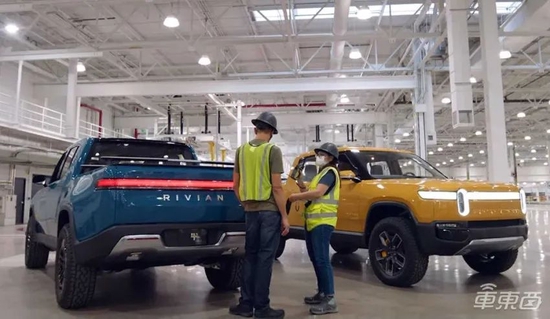
整体来看,将电芯直接集成到底盘里已经成为车企之间共同的选择了。因此,目前在CTC技术方面发力的车企也明显增多了。
特斯拉、比亚迪、零跑已经发布过了自己的CTC方案,大众和沃尔沃也在2021年就已经提出了CTC方案,未来也将会投入量产,而哪吒汽车也在其电池分享会上表示将会在明年推出CTC技术。
在电池企业方面,宁德时代早在2020年8月份就提出了要发展CTC技术,目前还迎来了华为车BU高管的加盟,其量产产品应该也会很快亮相。
此外,其他的动力电池企业如蜂巢能源等也已经加速了这方面的布局。
目前来看,CTC技术或许真的能够成为电池技术的一个重要突破点,对于缓解续航焦虑,提升电池安全性来说都非常重要。
03。
三家车企已经发布 主要策略较为类似
虽然已经有多家车企公布了自己的CTC计划,但现阶段来看,只有特斯拉、比亚迪和零跑进行了产品发布,并且已经有很多产品图了。
从产品设计方面来看,这三家车企都是选择上述的第一种形式,直接采用了CTC技术。不过,从设计细节上来看的话,这三家企业的策略上也存在一些不同之处。
下面主要从结构、电芯集成和制造工艺三个方面对特斯拉、比亚迪和零跑的方案进行对比。
从结构上来看,特斯拉可能是做出改变最彻底的企业。根据特斯拉柏林工厂和得州工厂流出来的图片来看,其CTC技术彻底打通了电池包和车厢的联系。
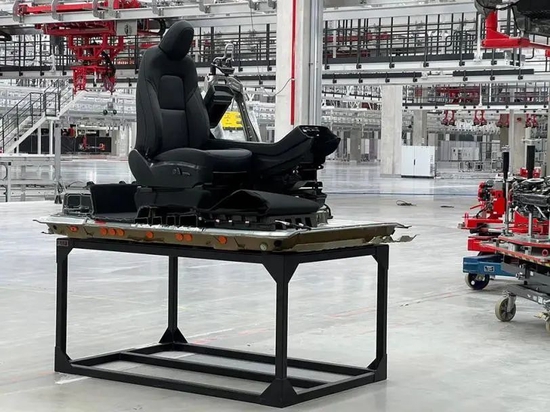
电池包上方设有一根横梁,前排座椅直接安装到了横梁上,而后排的固定结构则与电池包无关。
这样一来,前排两个座椅的下压力直接由电池包承受,同时前排乘客和后排乘客的脚部位置的力也直接由电池包承受。
比亚迪和零跑的方案则比较接近。零跑汽车在发布会上展示的图片显示,其CTC方案在原来的车辆底盘上仍然保留了车身上的骨架环形梁式结构。
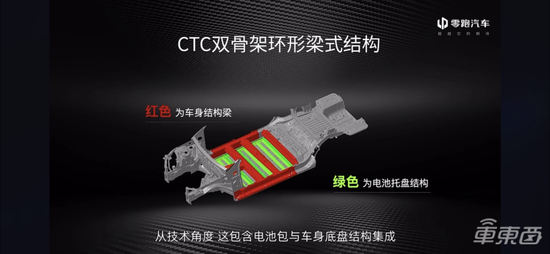
电池包的上板直接和底盘的结构梁焊接在了一起,相当于既是车厢的底板又是电池的上板结构。车辆座椅则直接安装到了车身的结构梁上。电池包则只承担了前后排乘客脚步空间的力。
从曝光的图片来看,比亚迪和零跑的设计非常相似,也将车厢的底板和电池的上板结构合二为一,座椅的设计方案也比较类似。

虽然特斯拉、比亚迪和零跑的方案略有不同,但这些方案之间并没有好坏之分。
在这些方案中,车内乘客距离电芯都只隔了一个电池上板结构,因此,这三家车企都需要做缓冲设计,避免车主大力踩底板时直接压到电芯,减少不必要的麻烦。
另一方面,在电芯上方增加隔热材料也非常必要,这样可以避免发生热失控之后,热量在第一时间传递到乘客舱。
车身结构之外,电芯集成也是非常关键的一点,这也是三家车企差别最大的地方。
还是先从特斯拉看起,关于特斯拉的电芯已经非常明确了,无论是柏林工厂展示的图片还是得州工厂展示的图片,其CTC技术都和4680电芯紧密相连。
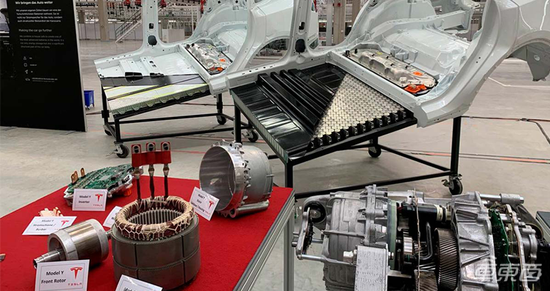
特斯拉主要通过4680电芯在底盘上进行排列组合,内部没有模组,一眼看过去全是密密麻麻的4680电芯。根据特斯拉展示的图片来看,一列约有34个,一共分为24列,中间有水冷板进行散热。
从这点来看,特斯拉真正贯彻了Cell to Chassis。
目前比亚迪还没有曝光过CTC电池的内部图片,但根据此前海豚(配置|询价)电池包的设计,可以猜测其做法与特斯拉类似,采用了刀片电池直接集成到底盘的方式。
与特斯拉的圆柱电池不同,比亚迪的刀片电池更长,几乎横贯车身,并且在CTP时代就已经取消了模组,目前很有可能会直接采用刀片电池集成到底盘。
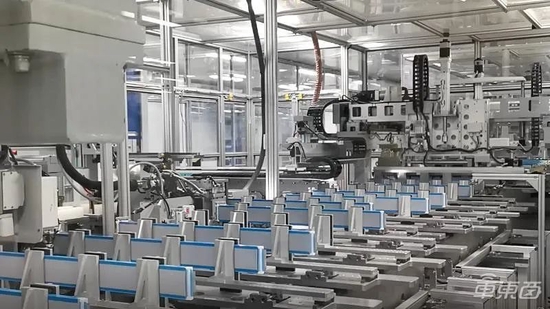
而零跑的做法则略有不同。从结构图上来看,零跑的CTC采用了模组集成到底盘中的方式,采用了7个大模组,这样节省的零部件数量有限,空间利用率并没有达到最好。
所以从这点来看,零跑的策略更像是MTC,而不是CTC。
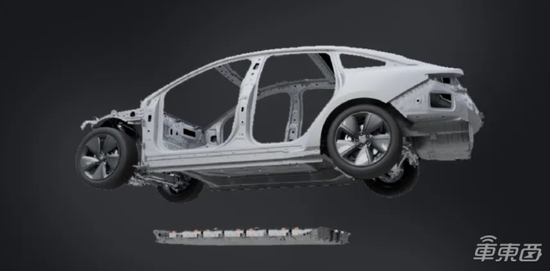
不过这也跟零跑汽车没有参与电芯开发分不开,比亚迪一直都在采用自己的电芯,特斯拉最近也在积极生产4680电芯,自产电芯的好处就是这两家企业在开发CTC的时候可以提前根据自己的电芯标准来开发。
对于零跑来说,目前并没有自产电芯的能力,主要还是从供应商处购买电芯,直接集成模组则更加高效便捷。
而从制造工艺上来看,特斯拉革新了制造工艺,采用了前后一体压铸技术,与CTC技术起了相辅相成的作用,可以更高效地制造车身,而比亚迪和零跑方面在车身制造工艺上并没有太大的改变,在未来也有可能会引入一体压铸技术。
整体来看,特斯拉和比亚迪的CTC方面,无论从结构上,还是从整体设计上,都更加彻底,而零跑并不具备电芯集成的能力,还有很大的提升空间。
但这三家车企都已经迈出了关键的一步,相信之后还会有更多车企加入到这一行列。
04。
结语:电池技术革新迫在眉睫
在目前的新能源汽车领域,动力电池仍然是非常重要的一个零部件,甚至决定了一辆电动汽车的下限。但目前其发展遇到了一定的瓶颈,始终无法进一步突破。
车企和电池汽车主要从两个方面来寻找解决方案,一是从化学体系方面入手,研发新的化学体系,研发固态电池等方式,但进展并不明显。
另一种方法就是通过改进封装工艺,在单位体积内塞入更多的电芯。在这条路径上,车企和电池企业推出了CTP技术,即cell to Pack,取消电池模组;现阶段又推出了CTC技术。
但这对于目前的电池行业来说还不够,在原材料价格持续疯涨的情况下,还需要推动电池技术的革新。
Electric vehicle companies get together to engage in CTC technology, what is the difference?Among the new energy vehicles in the head, Tesla explained the CTC technology as early as the 2020 Battery Day event, believing that this technology can save 370 body parts and reduce the body weight by 10%, while the other head The player BYD also released CTB technology this year (it is still CTC technology in essence).
Tesla led the team, these car companies want to kill the battery pack
CATL, the leading player in the power battery industry, is also actively developing CTC technology. Cai Jianyong, the former general manager of Huaweis smart car solution BU intelligent vehicle control field, has joined CATL and will fully promote the CTC battery chassis integration business.
The domestic new car company Leapmotor also officially announced its CTC technology in April, which can increase the battery life of its first sedan, the C01, to more than 700 kilometers.
In addition, Nezha, Volkswagen, Volvo and other car companies will make efforts in the CTC technology method, and Nezha Auto has made it clear that this product will be launched next year.
Judging from the actions of these car companies, CTC technology has undoubtedly become one of the hottest topics in the power battery field this year.
With the development of new energy vehicles, the development of power batteries has reached the ceiling, and a solution is urgently needed. From the perspective of chemical materials, the ceiling of ternary lithium batteries is gradually emerging, while solid-state batteries still have a long way to go before mass production.
Under such circumstances, new energy vehicle industry giants such as Tesla and BYD and power battery giants such as CATL have begun to make layouts at the level of battery packaging technology.
Judging from the actions of many car companies and battery companies, the leading car companies in the field of new energy vehicles have joined the CTC army. In the foreseeable future, this technology may become the main power battery packaging technology.
So, what are the main difficulties of CTC technology? What are the main technical paths? What are the main paths adopted by the car companies that have been released so far?
Benefit of this article: Tesla and BYD Leaprun have come up with products, and CTC technology has begun to come into reality. Sharing the report Research on CTC Technology Progress in the Automotive Industry: Tesla Leading New Technology Series II, From Concept to Mass Production, the dialog box replied [Car Dongxi 0367] to download the report.
01.
The body structure needs to be redesigned, and it is also difficult to integrate batteries
First of all, lets briefly understand the CTC technology, its full name is Cell to Chassis, that is, the cell to the chassis. Literally understood, it is to place the battery directly into the vehicle chassis, which is different from the previous design of the separation of the chassis and the battery pack.
The reason for this is mainly to increase the energy density of the battery by improving space utilization. After directly integrating the battery cells into the chassis, a lot of materials can be saved, and the volume of the battery cells that can be installed is correspondingly expanded. By adding more battery cells, car companies can increase the volumetric energy density to achieve longer battery life performance.
On the other hand, because more materials are saved, the cost of power batteries is also reduced.
From the above description, CTC technology does have many advantages, but the fact that there is no mass production at present also shows that this technology still has certain difficulties.
Overall, there are multiple core technical points in CTC technology.
First of all, Cell to Chassis means that the traditional vehicle chassis structure needs to be changed.
A body engineer told the car that in order to save costs, most car companies will directly take the battery pack from the supplier, and then design the body structure according to the battery pack.
The body, battery pack and chassis form a sandwich structure, and the battery pack is located between the body and the chassis, that is to say, the battery pack is always under the protection of the body structure and will not be directly subjected to external impacts.
The CTC technology integrates the cells directly into the vehicle chassis, and the battery pack becomes a part of the chassis. The inner bottom plate of the vehicle serves as the upper cover of the traditional battery pack, and the cells and the lower tray are stuffed into the vehicle body, making the battery pack also become a One of the stress structures of the body.
Tesla led the team, these car companies want to kill the battery pack
This makes the traditional model of designing the body and battery pack separately no longer applicable. The body designer must take the layout of the chassis cells into consideration when designing the body from the very beginning, which is a big deal for most body designers. s test.
On the other hand, CTC technology also has a certain impact on the flexibility of body design. For large-scale car companies, they will design a general car platform, which can be extended to various models. The changes are operations such as lengthening and shortening.
However, after the CTC technology is adopted, when the body structure changes, the battery structure of the chassis will also change, which will eventually lead to an increase in the design cost.
More importantly, after the battery cell and the chassis are integrated, the cost and technical difficulty of maintenance will also increase.
From this point of view, one of the most critical technologies of CTC is the design of the body structure.
Then lets turn our attention to the battery pack itself. A very important element of CTC technology is to completely cancel the module and pack, and directly integrate the battery into the chassis.
Tesla led the team, these car companies want to kill the battery pack
This also means that the battery cells need to be directly laid in the vehicle chassis, and without the protection of the module and the PACK structure, it is necessary to provide insulating support for the battery cells.
In addition to some necessary designs for cells, battery thermal management and other aspects also need to be updated.
The cells and cells are directly arranged together, which means that once thermal runaway occurs in one cell, it is easy to conduct to adjacent cells, resulting in thermal runaway of the entire battery.
When designing, it is necessary to consider where the water-cooling plate is placed and how to design the pressure relief valve. These issues are directly related to the safety of the vehicle and passengers, so the design in this regard should not be sloppy. The BMS design of the entire battery pack is also very important.
Overall, if you want to use CTC technology, it will have a certain impact on the structural design of the body and the design of the battery pack. These main difficulties have become the most critical aspects of CTC technology.
02.
Divided into two ways, both have reached the eve of mass production
At present, CTC technology is still relatively new, and only a few car companies have displayed their own solutions and products, and most car companies have not yet exhibited products.
Judging from the products that have been released, there are two main forms of CTC technology. One is the method currently adopted by many car companies - integrating the battery directly into the vehicle chassis.
This method is a bit close to the development idea in the field of smartphones: from the beginning, the battery is detachable and the battery is integrated.
Specifically, car companies directly cancel the upper plate structure of the battery pack, or use the inner bottom plate of the vehicle as the upper plate structure of the battery pack, and then arrange the cells on the tray, and combine the tray and the inner bottom plate of the body to form New body structure.
Tesla led the team, these car companies want to kill the battery pack
The seat of the vehicle can be installed directly above the battery pack to further expand the space structure of the body, and more cells can be added to the battery layout, thereby improving the battery life.
So, how does this approach deal with technical difficulties? In this regard, the strategies of different car companies are different. In terms of body structure, Tesla has changed the body structure by adopting the front and rear integrated die-casting technology. The front and rear two large pieces can be directly spliced into the vehicle chassis, which can pre-empt the space of the chassis in advance. Keep it ready for cell integration.
And BYD also adopts a new model platform e3.0, although it is not clear how BYD does it, but the new model platform will definitely adjust the body structure.
In terms of heat dissipation, most of the water-cooled plates are still used to dissipate heat. In Teslas solution, the water-cooled plate is placed directly above the battery cells, so that the heat of the battery cells will not be transmitted to the cockpit, and the pressure of the battery pack will be released. The valve is under the battery cell, which further ensures the safety of the battery pack. Low-density glue is used between the cells to reduce the risk of heat conduction between them.
In the zero-run solution, a water-cooling plate and an insulating layer are used under the battery core, and an insulating layer is also used on the top of the battery core to prevent heat from rising to the interior of the cockpit.
The other is the skateboard chassis, which covers CTC technology, wire control technology, etc., completely decouples the driving system and steering system of the vehicle chassis from the passenger compartment of the vehicle, and the chassis and body are directly independent.
Che Dongxing has previously watched the skateboard chassis designed by Yopao Technology. Through the remote control device, the vehicle chassis can freely complete a series of commands for forward and backward, and even automatic parking.
Tesla led the team, these car companies want to kill the battery pack
This design method is similar to the non-load-bearing structure in the era of fuel vehicles, where the chassis and body are separated. But the difference is that this skateboard chassis is more powerful and can be said to be the soul of the vehicle.
As long as the chassis and the body reach a consensus communication agreement, various models can be manufactured based on the skateboard chassis.
Thanks to the previous experience in non-load-bearing body structure design, after adopting the skateboard floor, it does not need to spend too much effort to redesign the body, and it can almost copy the previous non-load-bearing body design scheme.
The structure of the battery pack and heat dissipation are particularly critical for the skateboard chassis. Lucid CEO and CTO Peter Rawlinson once explained how to protect and dissipate heat from the skateboard chassis. He believes that the combination of the battery pack with the body shell of the vehicle can increase the structural rigidity of the car, make the car more convenient to operate, stabilize the central structure of the collision buffer zone at the rear of the car, absorb energy, protect passengers from collisions, and also protect Battery.
In Lucids solution, the cells are basically installed upside-down, the battery dissipates heat downward, and there is an additional layer of coolant.
However, this technology has not yet achieved mass production. The leading companies Rivian and Lucid are currently in the stage of ramping up their production capacity and have not been able to complete large-scale delivery. In addition, other skateboard chassis companies have not achieved mass production.
Tesla led the team, these car companies want to kill the battery pack
Overall, the direct integration of batteries into the chassis has become a common choice among car companies. Therefore, the number of car companies that are currently making efforts in CTC technology has also increased significantly.
Tesla, BYD, and Leapmotor have released their own CTC solutions. Volkswagen and Volvo have also proposed CTC solutions in 2021, which will be put into mass production in the future, and Nezha Auto is also at its battery sharing meeting. Said that it will launch CTC technology next year.
In terms of battery companies, CATL proposed to develop CTC technology as early as August 2020, and has also welcomed the participation of Huawei Car BU executives, and its mass-produced products should also be unveiled soon.
In addition, other power battery companies such as Honeycomb Energy have also accelerated the layout in this regard.
At present, CTC technology may really become an important breakthrough point in battery technology, which is very important for alleviating battery life anxiety and improving battery safety.
03.
The three auto companies have released their main strategies that are similar
Although many car companies have announced their own CTC plans, at this stage, only Tesla, BYD and Leapmotor have released products, and there are already many product maps.
From the perspective of product design, these three car companies all chose the first form above and directly adopted the CTC technology. However, in terms of design details, there are some differences in the strategies of the three companies.
The following is a comparison of the plans of Tesla, BYD and Leapmotor from three aspects: structure, cell integration and manufacturing process.
From a structural point of view, Tesla may be the company that has made the most radical changes. According to the pictures from Teslas Berlin factory and Texas factory, its CTC technology has completely opened up the connection between the battery pack and the carriage.
Tesla led the team, these car companies want to kill the battery pack
There is a beam above the battery pack, the front seats are directly mounted on the beam, and the fixed structure of the rear row is independent of the battery pack.
In this way, the downforce of the two front seats is directly borne by the battery pack, and the force of the foot positions of the front and rear passengers is also directly borne by the battery pack.
The plans of BYD and Leaprun are relatively close. The pictures displayed by Leapmotor at the press conference show that its CTC solution still retains the skeleton ring beam structure on the body on the original vehicle chassis.
Tesla led the team, these car companies want to kill the battery pack
The upper plate of the battery pack is directly welded to the structural beam of the chassis, which is equivalent to both the bottom plate of the carriage and the upper plate structure of the battery. The vehicle seats are mounted directly to the structural beams of the body. The battery pack is only responsible for the foot space of the front and rear passengers.
Judging from the exposed pictures, the designs of BYD and Leapmotor are very similar. They also combine the bottom plate of the carriage and the upper plate structure of the battery into one, and the design of the seat is also similar.
Tesla led the team, these car companies want to kill the battery pack
Although Tesla, BYD and Leapmotor have slightly different plans, there is no difference between these plans.
In these solutions, the passengers in the car are only separated from the battery cell by the upper plate structure of the battery. Therefore, the three car companies need to make a buffer design to avoid direct pressure on the battery cell when the car owner vigorously steps on the bottom plate, reducing unnecessary trouble. .
On the other hand, it is also necessary to add thermal insulation material above the battery cells, so as to avoid thermal runaway and heat transfer to the passenger compartment for the first time.
In addition to the body structure, cell integration is also a very critical point, which is also the biggest difference between the three car companies.
Let’s start with Tesla. Tesla’s battery cells are very clear. Whether it’s the pictures shown at the Berlin factory or the pictures shown at the Texas factory, its CTC technology is closely linked to the 4680 battery cells.
Tesla led the team, these car companies want to kill the battery pack
Tesla mainly arranges and combines 4680 cells on the chassis. There are no modules inside. At first glance, it is full of dense 4680 cells. According to the pictures shown by Tesla, there are about 34 columns in one column, divided into 24 columns in total, with a water cooling plate in the middle for heat dissipation.
From this point of view, Tesla has truly implemented Cell to Chassis.
At present, BYD has not exposed the internal pictures of the CTC battery, but according to the previous design of the Dolphin (configuration|inquiry) battery pack, it can be guessed that its approach is similar to that of Tesla, and the blade battery is directly integrated into the chassis.
Unlike Teslas cylindrical battery, BYDs blade battery is longer and almost traverses the body, and the module has been cancelled in the CTP era. At present, it is very likely that the blade battery will be directly integrated into the chassis.
Tesla led the team, these car companies want to kill the battery pack
The zero-run approach is slightly different. From the structural diagram, the CTC of Leapmotor adopts the method of integrating modules into the chassis, and adopts 7 large modules, which saves a limited number of parts and does not achieve the best space utilization.
So from this point of view, the strategy of Zero Run is more like MTC than CTC.
Tesla led the team, these car companies want to kill the battery pack
However, this is also inseparable from the fact that Leapmotor did not participate in the development of batteries. BYD has been using its own batteries. Tesla has also been actively producing 4680 batteries recently. The advantage of self-producing batteries is that these two companies are in When developing CTCs, you can develop them in advance according to your own cell standards.
For Leapmotor, currently it does not have the ability to produce its own cells. It mainly buys cells from suppliers. It is more efficient and convenient to directly integrate modules.
From the manufacturing process point of view, Tesla has innovated the manufacturing process and adopted the front and rear integrated die-casting technology, which complements the CTC technology and can manufacture the body more efficiently. Without much change, it is also possible that one-piece die-casting technology will be introduced in the future.
On the whole, Tesla and BYDs CTC are more thorough in terms of structure and overall design, while Leapmotor does not have the ability to integrate cells, and there is still a lot of room for improvement.
However, these three car companies have already taken a critical step, and I believe that more car companies will join this ranks in the future.
04.
Conclusion: battery technology innovation is imminent
In the current field of new energy vehicles, the power battery is still a very important component, and even determines the lower limit of an electric vehicle. But at present, its development has encountered a certain bottleneck, and it has never been able to make further breakthroughs.
Car companies and battery vehicles mainly look for solutions from two aspects. One is to start from the chemical system, develop new chemical systems, and develop solid-state batteries, but the progress is not obvious.
Another method is to pack more cells into a unit volume by improving the packaging process. On this path, car companies and battery companies have launched CTP technology, that is, cell to Pack, which cancels battery modules; at this stage, CTC technology has been launched.
But this is not enough for the current battery industry. In the case that the price of raw materials continues to skyrocket, it is also necessary to promote the innovation of battery technology.

